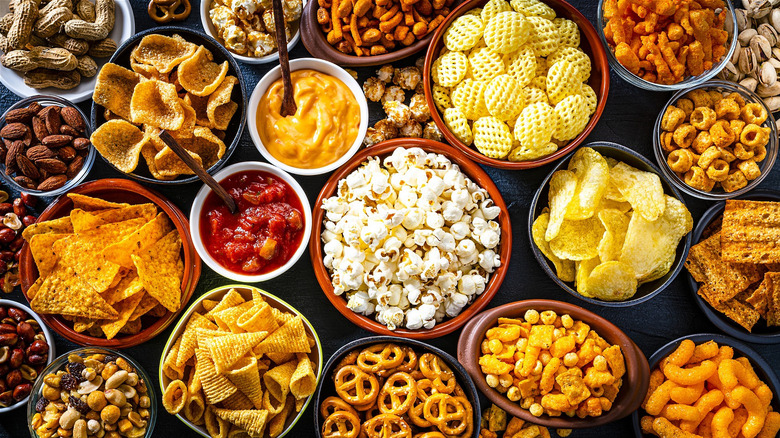The Original Comfort Food Is Also The Most Versatile
When the idea of "comfort food" first emerged in American mainstream media in the 1970s, potatoes were already on the shortlist. Writers and celebrities touted the benefits of the vegetable — boiled, baked, or mashed to your discretion. In the '80s, The New York Times placed mashed potatoes "high on the list of 'comfort foods.'" Today you can find them in comfort recipes around the world, from Canadian poutine to Cornish pasties. But what makes potatoes so, well, comforting?
According to a 2015 research study, comfort food is powerful because of its ability to bring up associations with positive memories. A different 2014 paper argues that food given by a parent can create positive feelings and facilitate bonding. Perhaps If your mother made mashed potatoes for every happy holiday get-together of your formative childhood years, you'll probably get a sense of emotional comfort when eating mashed potatoes as an adult.
Beyond the nostalgia factor, potatoes have a lot going for them on a molecular level. Many popular potato dishes are high in fats and carbs, which makes them warming and satisfying; the food equivalent of a hug. Research suggests that calorie-rich foods cause our brains to release dopamine, a neurotransmitter that plays a role in how we feel pleasure. Potatoes are also rich in tryptophan and potassium, which are both key nutrients for producing serotonin, a hormone that can regulate mood and make you feel happier.
Comfort food, 3 ways
The ubiquity of potatoes has a lot to do with their variety. The vegetable can be sorted into three broad categories: starchy, waxy, and all-purpose. This versatility effectively triples the number of comfort-inducing recipes potatoes can be used in.
Starchy potatoes like russet potatoes are high in starch and low in moisture, which makes them absorbent and easy to break apart. These make great mashed potatoes — they mash well and take on the flavor of butter, milk, and other add-ins for a rich final product. Starchy potatoes are also the potato of choice for fried dishes, a popular category of comfort food. Example A: poutine, which Jamie Oliver called Canada's "unofficial national dish." It consists of french fries doused in gravy and topped with cheese curds.
Waxy potatoes, on the other hand, are low in starch, high in moisture, and great for dishes that require a firm, intact potato. Baby potatoes and fingerlings are popular waxy varieties. Use these for cold dishes like a classic potato salad recipe or add them to stews for a hearty final product.
Between waxy and starchy is the all-purpose potato, which is a good substitute for both varieties. They're suitable for frying, roasting, stewing, and everything in between. Try an all-purpose variety like the Yukon Gold in baked dishes like funeral potatoes, Utah's signature comfort dish. This cheesy potato bake is common at (you guessed it) funerals, as well as family get-togethers, potlucks, and Thanksgiving meals.

